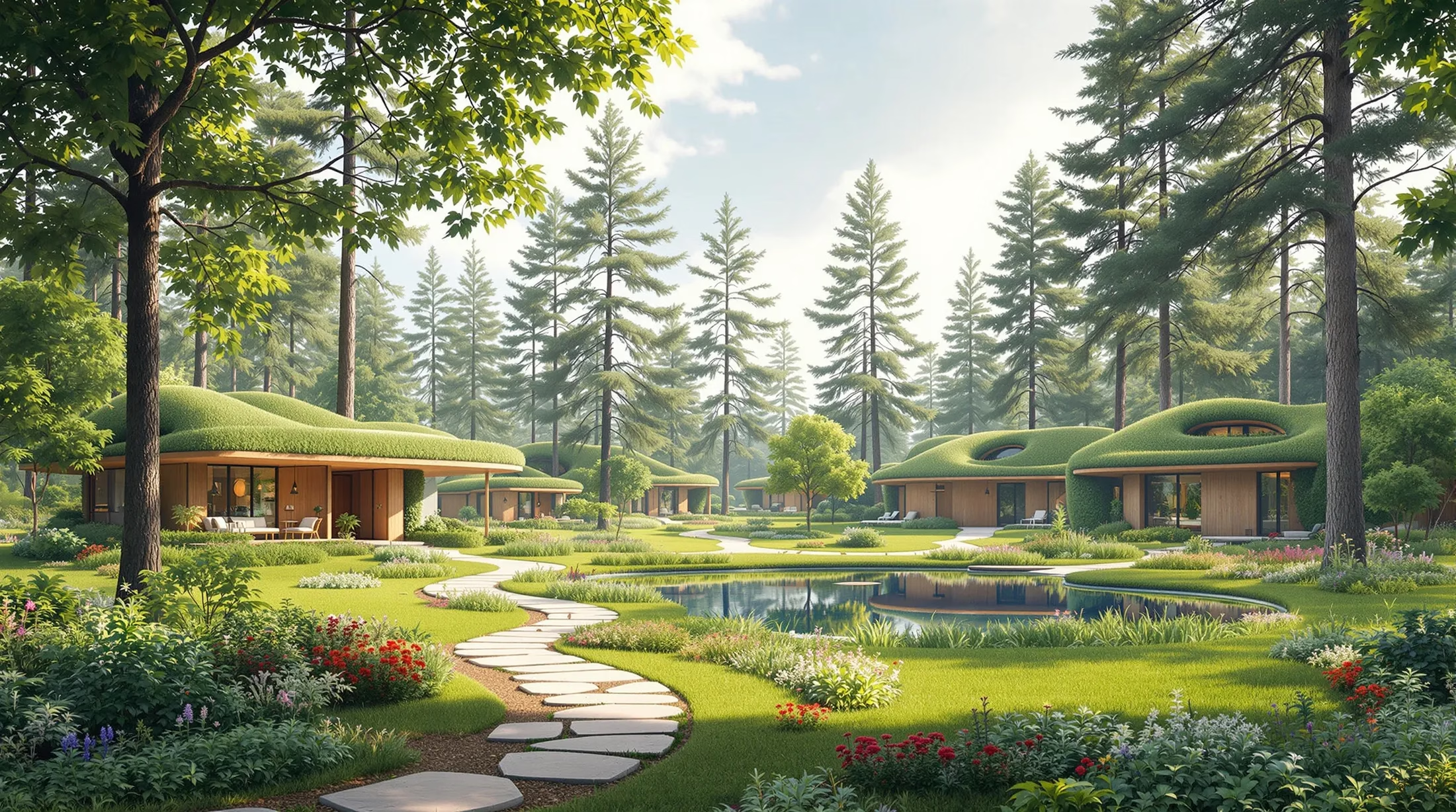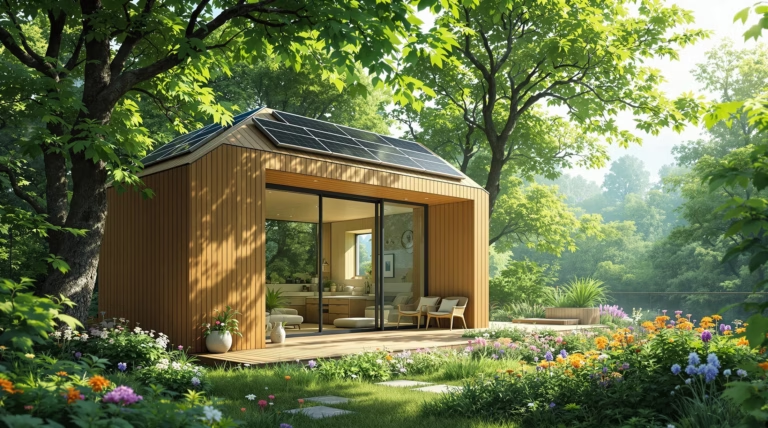Off Grid Home Plans: Your Ultimate Guide to Sustainable Living
Ready to break free from traditional utility dependencies and embrace a more sustainable way of living? Off-grid home plans offer an innovative approach to housing that combines independence, environmental consciousness, and smart design. Let’s explore how these unique architectural solutions can transform your living space into a self-sustaining haven.
Understanding Off Grid Home Plans
Off grid home plans represent the architectural blueprint for a lifestyle of independence and sustainability. Unlike conventional homes that rely on municipal utilities, these designs incorporate systems that allow you to live completely disconnected from public power grids, water supplies, and sewage systems. The growing interest in off grid living stems from a desire for energy independence, reduced environmental impact, and the freedom to live anywhere, regardless of infrastructure availability.
What Are Off Grid Home Plans?
Off grid home plans are comprehensive architectural designs for dwellings that operate completely independently from municipal utility systems. These specialized blueprints include detailed specifications for:
- Alternative energy systems integration
- Water collection and purification methods
- Waste management solutions
- Solar orientation considerations
- Thermal mass placement strategies
- Natural ventilation systems
Benefits of Off Grid Living
Embracing off grid living offers significant advantages that extend beyond environmental impact:
- Financial savings through eliminated utility bills
- Protection from rising energy costs
- Greater freedom in location choice
- Enhanced resilience during power outages
- Reduced carbon footprint
- Increased self-reliance and practical skills
Types of Off Grid Home Plans
The world of off grid home plans offers diverse architectural approaches, each with unique characteristics suited to different environmental conditions, budgets, and lifestyle preferences. These designs range from ancient building techniques reimagined for modern living to cutting-edge sustainable architecture.
Passive Solar House Plans
Passive solar house plans represent one of the most energy-efficient approaches to off grid living. These homes can reduce heating requirements by 50-80% compared to conventional construction through:
- Strategically placed south-facing windows
- Calculated roof overhangs
- Interior thermal mass elements
- Natural temperature regulation systems
- Integrated photovoltaic panels
Tiny House Plans
Tiny houses have revolutionized off grid living through efficient design and minimal resource requirements. These compact dwellings typically range from 100 to 400 square feet and offer:
| Feature | Benefit |
|---|---|
| Multi-purpose furniture | Maximizes space utilization |
| Vertical storage solutions | Optimizes storage capacity |
| Compact appliances | Reduces energy consumption |
| Mobile design options | Enables location flexibility |
Earthship House Plans
Pioneered by architect Michael Reynolds in the 1970s, Earthship homes represent a comprehensive approach to self-sufficient living. These innovative structures utilize recycled materials, particularly earth-filled tires for thermal mass walls, while incorporating passive solar principles to maintain comfortable temperatures year-round with minimal additional heating or cooling needs.
- Integrated greenhouse area for food production
- Advanced rainwater harvesting systems
- Natural ventilation patterns aligned with climate
- Multi-functional south-facing windows for lighting and heating
- Thermal energy storage through interior wall design
- Roof surfaces that direct water to storage cisterns
What sets Earthships apart is their complete systems integration, where each component serves multiple purposes. These resilient homes have demonstrated effectiveness across diverse climates, from deserts to alpine regions. While traditional designs follow specific patterns, modern adaptations allow for personalized aesthetics while maintaining core principles of thermal performance, water harvesting, and energy independence.
Straw Bale House Plans
Straw bale construction harnesses compressed agricultural waste to create exceptionally well-insulated wall systems ideal for off-grid living. These structures offer remarkable thermal properties with insulation values between R-30 and R-50, substantially higher than conventional building methods.
| Feature | Benefit |
|---|---|
| Natural plaster finishes | Allows walls to breathe while protecting from moisture |
| Thick wall construction | Creates deep window reveals and substantial feel |
| Sound insulation | Provides excellent acoustic properties |
| Fire resistance | Offers enhanced safety when properly plastered |
Construction approaches include both load-bearing methods and post-and-beam techniques, offering flexibility in design. The resulting homes provide healthy indoor environments with stable humidity levels and superior air quality, while significantly reducing the size and cost of off-grid energy systems needed for year-round comfort.
Cob House Plans
Cob construction reimagines one of humanity’s oldest building techniques for modern off-grid living. This method combines clay-rich soil, sand, and straw to create monolithic walls that can be sculpted into organic, flowing forms. The material’s exceptional thermal mass properties help moderate temperature fluctuations, particularly beneficial in areas with significant day-night temperature variations.
- Materials often available directly on site
- Simple techniques requiring minimal specialized tools
- Integration capabilities with timber framing
- Built-in furniture possibilities (benches, shelves, niches)
- Remarkable durability with centuries-long lifespan
- Low environmental impact and construction costs
Modern cob house plans often combine traditional techniques with contemporary elements like passive solar design and natural insulation materials. While labor-intensive, these structures offer extraordinary aesthetic character and proven longevity, with examples in Europe and the Middle East standing for centuries.
Water Management Strategies
Water management in off-grid homes revolves around creating self-contained systems for collection, storage, purification, and responsible usage. Rainwater harvesting serves as the primary collection method, with strategically designed roof surfaces maximizing capture efficiency. A 2,000 square foot roof can collect approximately 1,250 gallons of water from just one inch of rainfall.
- Underground cisterns – maintain cooler temperatures and prevent algae growth
- Above-ground tanks – enable gravity-fed distribution systems
- Well drilling – requires additional permits and treatment systems
- Multi-stage filtration systems
- UV sterilization for drinking water
- Reverse osmosis purification
Modern conservation practices can reduce water consumption by up to 70% compared to conventional homes through integrated solutions like low-flow fixtures, greywater recycling systems, and composting toilets. Advanced monitoring technology tracks usage patterns and detects potential leaks, creating resilience against drought conditions while ensuring reliable clean water supply independent of municipal services.
Waste Management Solutions
Off-grid waste management transforms conventional waste into valuable resources within a closed-loop system. Composting toilets form the foundation of sustainable human waste management, converting waste into nutrient-rich soil amendments while minimizing water usage. These systems range from basic DIY installations to sophisticated manufactured units with ventilation fans and heating elements.
| System Type | Application |
|---|---|
| Greywater Systems | Filter and redirect sink, shower, and washing machine water to landscape irrigation |
| Constructed Wetlands | Natural waste processing with minimal environmental impact |
| Mound Systems | Alternative septic processing for challenging soil conditions |
| Advanced Treatment Units | On-site waste processing with enhanced filtration |
Integrated waste management emphasizes reduction, reuse, and recycling, particularly focusing on composting food scraps and organic materials. This comprehensive approach minimizes external waste removal needs while returning valuable nutrients to the soil, creating a self-sufficient household ecosystem that reduces environmental impact.
Legal and Financial Considerations
Off-grid living requires careful navigation of legal requirements and financial considerations that extend beyond the initial appeal of self-sufficiency. Despite the independence associated with off-grid homes, they remain subject to legal frameworks governing land use, construction standards, and environmental impacts. Understanding these regulations before construction prevents costly delays, fines, or potential legal complications.
The financial landscape presents unique challenges and opportunities. While operating costs typically decrease long-term through eliminated utility bills, off-grid homes require substantial upfront investments in self-sustaining systems. Financing often proves more complex than conventional properties, as many lenders struggle with valuing homes lacking utility connections. Comprehensive planning for insurance, property taxes, and system maintenance ensures both environmental and economic sustainability.
Adhering to Building Codes
- Local building permits required for new construction and renovations
- Specific regulations for electrical systems and plumbing installations
- Safety standards for structural integrity and fire prevention
- Environmental contamination prevention requirements
- Certification standards for renewable energy systems
- Water rights restrictions, particularly in western states
Many jurisdictions have modernized their codes to accommodate alternative building methods, though requirements vary significantly by location. Early consultation with local authorities and experienced architects can streamline the permitting process and prevent costly redesigns. Working with attorneys familiar with local land use law helps navigate zoning restrictions affecting activities like livestock raising, business operations, or minimum home sizes.
Understanding Property Taxes and Insurance
Off-grid properties remain subject to property taxes, though assessment methods may differ from conventional homes. Tax considerations include both land value and improvements, with some regions offering incentives for renewable energy installations. However, certain areas may treat solar arrays and wind turbines as taxable improvements, potentially increasing tax obligations.
| Insurance Consideration | Impact |
|---|---|
| Specialized Coverage | Required for renewable energy equipment and alternative systems |
| System Failure Protection | Coverage for temporary uninhabitable conditions |
| Documentation Requirements | Professional certifications and maintenance records |
| Premium Costs | Often higher than conventional home insurance |
Community and Lifestyle Aspects
The off-grid living journey transcends technical specifications, representing a vibrant movement of like-minded individuals. Digital platforms, particularly the r/homestead community on Reddit, serve as virtual hubs where enthusiasts exchange knowledge, solve challenges, and share achievements. These online connections frequently evolve into meaningful real-world relationships, creating robust support networks essential for navigating the unique demands of self-sufficient living.
Off-grid living fundamentally transforms one’s relationship with resources, technology, and nature. Instead of passively consuming utilities, residents become active stewards of their energy, water, and food systems. This shift demands new skill development and creative problem-solving, offering profound rewards through increased autonomy and natural connectivity. The lifestyle perfectly complements environmental consciousness, enabling significant ecological footprint reduction while maintaining modern conveniences.
Building a Community Connection
- Online forums facilitate real-time problem-solving and knowledge sharing
- Homesteading festivals provide hands-on learning opportunities
- Property tours showcase sustainable systems in action
- Local sustainability groups offer regular meetups and support
- Neighboring homesteaders share expertise and resources
- Digital platforms enable instant access to experienced practitioners
Despite initial perceptions of isolation, successful off-grid living thrives on community connections. These relationships prove invaluable during system challenges or extreme weather events, fostering resilience through shared experience and mutual support. Modern technology has revolutionized how off-grid communities interact, creating dynamic networks that combine digital convenience with traditional knowledge sharing.
Embracing the Off Grid Lifestyle
| Lifestyle Element | Impact |
|---|---|
| Resource Management | Direct engagement with energy, water, and food systems |
| Daily Rhythms | Synchronization with natural cycles and seasons |
| Home Design | Functionality-focused spaces supporting sustainable activities |
| System Integration | Cohesive approach to resource production and conservation |
The transition to off-grid living cultivates a profound shift from consumption to stewardship. Daily tasks like monitoring energy systems and managing water resources create a meaningful connection to natural cycles. Well-designed off-grid homes support this lifestyle through thoughtful architectural elements that maximize natural resources and create adaptable living spaces. This holistic approach transforms houses into active participants in resource management, fostering deep satisfaction and self-reliance.



